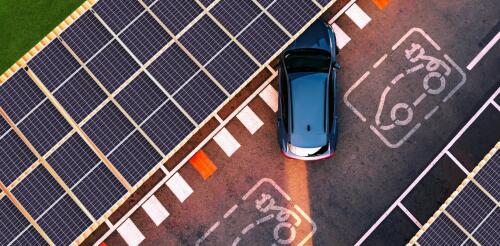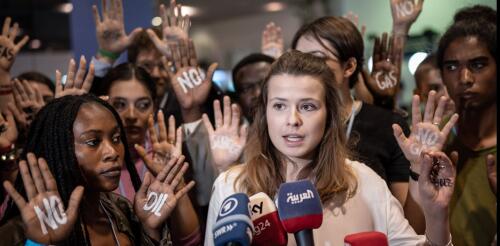Climate change
The planet is heating up as greenhouse gas emissions rise, contributing to extreme heat waves and once-unimaginable flooding. Yet despite the risks, countries’ policies are not on track to keep global warming in check. The problem isn’t a lack of technology. The International Energy Agency recently released a detailed analysis of the clean energy technology needed to lower greenhouse gas emissions to net zero globally by 2050. What’s needed, the IEA says, is significant government support to boost solar and wind power, electric vehicles, heat pumps and a variety of other technologies for a rapid energy transition. One politically popular tool for providing that government support is the subsidy. The U.S. government’s new Inflation Reduction Act is a multibillion-dollar example, packed with financial incentives to encourage people to buy electric vehicles, solar panels and more. But just how big do governments’ clean energy subsidies need to be to...
Leer in español There are questions that worry me profoundly as a population- and environmental-health scientist. Will we have enough food for a growing global population? How will we take care of more people in the next pandemic? What will heat do to millions with hypertension? Will countries wage water wars because of increasing droughts? These risks all have three things in common: health, climate change and a growing population that the United Nations determined passed 8 billion people in November 2022 – double the population of just 48 years ago. In my 40-year career, first working in the Amazon rainforest and the Centers for Disease Control and Prevention, and then in academia, I have encountered many public health threats, but none so intransigent and pervasive as climate change. Of the multitude of climate-related adverse health effects, the following four represent the greatest public health concerns for a growing population. Infectious disease...
In London, youth activists threw soup at Van Gogh’s “Sunflowers,” asking, “Is art worth more than life? More than food? More than justice?” In Melbourne, Australia, two protesters superglued themselves to Picasso’s “Massacre in Korea” to highlight the connections between climate change and future conflict and suffering. Others have engaged in similar protests, targeting a Boticelli at the Uffizi Gallery in Florence, Italy; an ancient Roman statue at the Vatican; a Klimt in Vienna; and a mummy exhibit at Barcelona’s Egyptian Museum. Their actions have incited mixed responses around the world. Some people praised the activists’ daring and ingenuity; others lambasted the groups for polarizing the fight for climate justice, sending mixed messages and using plain poor logic. But tactics like these draw media attention and make a lasting impression, and that’s the point – especially right now....
The world could still, theoretically, meet its goal of keeping global warming under 1.5 degrees Celsius, a level many scientists consider a dangerous threshold. Realistically, that’s unlikely to happen. Part of the problem was evident at COP27, the United Nations climate conference in Egypt. While nations’ climate negotiators were successfully fighting to “keep 1.5 alive” as the global goal in the official agreement, reached Nov. 20, 2022, some of their countries were negotiating new fossil fuel deals, driven in part by the global energy crisis. Any expansion of fossil fuels – the primary driver of climate change – makes keeping warming under 1.5 C (2.7 Fahrenheit) compared to pre-industrial times much harder. Attempts at the climate talks to get all countries to agree to phase out coal, oil, natural gas and all fossil fuel subsidies failed. And countries have done little to strengthen their commitments to cut greenhouse gas emissions in the...
Brazil’s president-elect, Luiz Inácio Lula da Silva, was greeted with applause and cheers when he addressed the U.N. climate conference in Sharm el-Sheikh, Egypt, on Nov. 16, 2022. As he had in his campaign, Lula pledged to stop rampant deforestation in the Amazon, which his predecessor, Jair Bolsanaro, had encouraged. Forests play a critical role in slowing climate change by taking up carbon dioxide, and the Amazon rainforest absorbs one-fourth of the CO2 absorbed by all the land on Earth. These articles from The Conversation’s archive examine stresses on the Amazon and the Indigenous groups who live there. 1. Massive losses The Amazon rainforest is vast, covering some 2.3 million square miles (6 million square kilometers). It extends over eight countries, with about 60% of it in Brazil. And the destruction occurring there is also enormous. From 2010 to 2019, the Amazon lost 24,000 square miles (62,000 square kilometers) of forest – the equivalent of...



